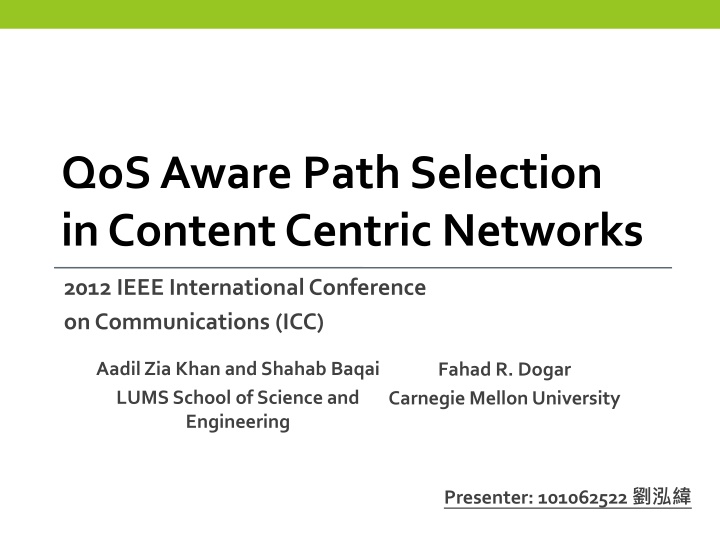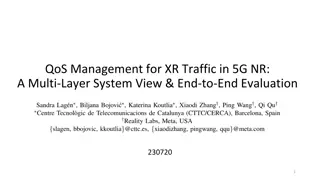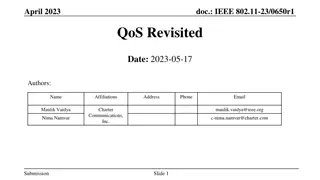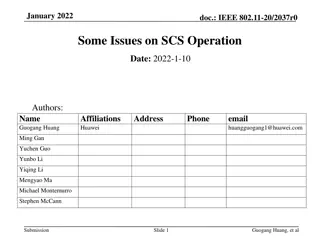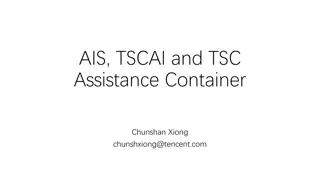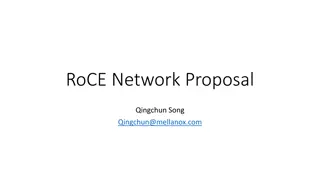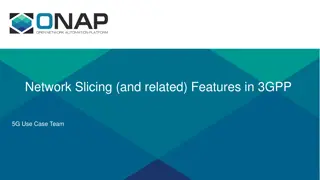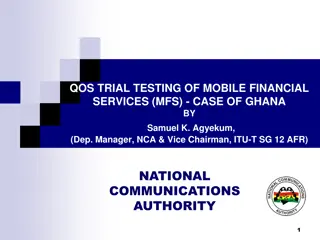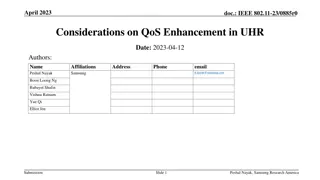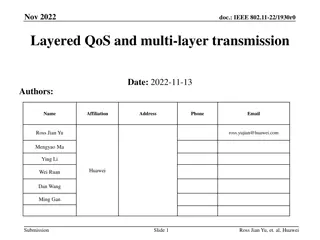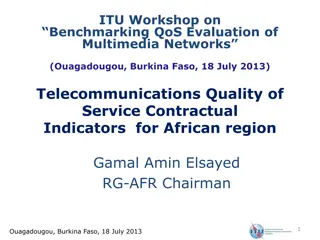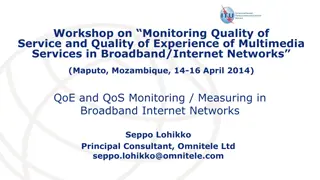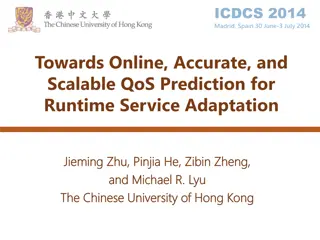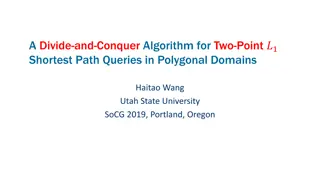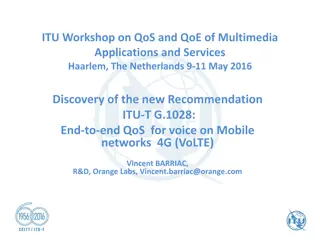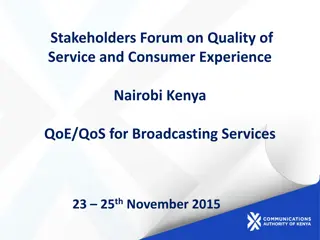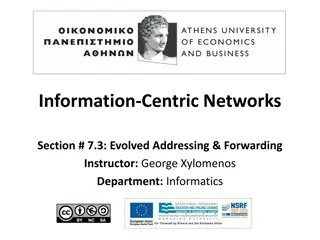QoS-Aware Path Selection in Content-Centric Networks
Internet content distribution has evolved to prioritize content names over host identities. This shift brings challenges and opportunities in optimizing traffic routing for various data types. The presentation discusses utilizing Ant Colony Routed Networks for efficient delay-sensitive and bandwidth-intensive traffic routing in Content-Centric Networks.
Uploaded on Oct 06, 2024 | 1 Views
Download Presentation

Please find below an Image/Link to download the presentation.
The content on the website is provided AS IS for your information and personal use only. It may not be sold, licensed, or shared on other websites without obtaining consent from the author.If you encounter any issues during the download, it is possible that the publisher has removed the file from their server.
You are allowed to download the files provided on this website for personal or commercial use, subject to the condition that they are used lawfully. All files are the property of their respective owners.
The content on the website is provided AS IS for your information and personal use only. It may not be sold, licensed, or shared on other websites without obtaining consent from the author.
E N D
Presentation Transcript
QoSAware Path Selection in Content Centric Networks 2012 IEEE International Conference on Communications (ICC) AadilZia Khan and Shahab Baqai LUMS School of Science and Engineering FahadR. Dogar Carnegie Mellon University Presenter: 101062522
Outline Introduction Problem Description Algorithm Ant Colony Routed Networks for Delay Sensitive Traffic Routing for Bandwidth Intensive Traffic Analysis and Evaluation Conclusion 01 / 14
Introduction Internet has become a medium for massive content distribution with end host identification based protocols Information sharing should be based on the content name, independent of the hosts identity where it is available Application layer approach exists some inherent issues Peer-to-peer approach requires network probing and knowledge regarding the topology Multicast may work but fail at scalability 02 / 14
Introduction (Cont.) ContentCentric Network Network level caching Security Intelligent forwarding Modification for forwarding technique Real time multimedia traffic Bandwidth intensive but delay tolerant traffic 03 / 14
Problem Description How to select the best next hop from many possible next hops at each CCN router such that: The per packet delay of real time traffic is minimized Download time of high bandwidth delay tolerant traffic is minimized Sample Scenario 1 2 04 / 14
Ant Colony Routed Networks Analogy to ant colony 05 / 14
Delay Sensitive Traffic Packet Type Interest Packet Data Packet Forwarding Path (Interest Packet Received) Pheromone values should be stored The interest packet is forwarded to the next hop having the greatest pheromone value in the FIB Scaling factor The probability to forward to other faces Pheromone value 06 / 14
Delay Sensitive Traffic (Cont.) Return Path (Data Packet Received) When a data packet is first received, the pheromone entry is: 0.1 For subsequent duplicate data packets, the pheromone value is: 0.5 07 / 14
Delay Sensitive Traffic (Cont.) 08 / 14
Routing for Bandwidth Intensive Traffic Measurement of all possible paths to the content Info-interest packet End host would send out Info-interest packet for the required content Info-data packet Contains bottleneck bandwidth 09 / 14
Routing for Bandwidth Intensive Traffic (Cont.) When a CCN node receives Info-interest packet Check Content Store If it exists, measure the available bandwidth on that face and reply the information in the Info-data packet If not, forward on all faces When a CCN node receives Info-data packet Read available bandwidth from the packet to FIB Compare bandwidth for specific content on all faces 10 / 14
Analysis and Evaluation EnvironmentSetup Mesh topology in Emulab, consisting of 20 routers 3 content sources 1 content subscriber Parameters Link delays are uniformly distributed between 30 and 60 milliseconds Packet size was 1Kb and streaming rate was 250 packets per second 11 / 14
Analysis and Evaluation (Cont.) DelaySensitiveTraffic Convergence time, Duplicate packets, Average packet delay Convergence Time Duplicate Packets Average Packet Delay 12 / 14
Analysis and Evaluation (Cont.) Bandwidth IntensiveTraffic Achieved bandwidth Combine highest and lowest bandwidth 13 / 14
Conclusion Propose modifications to theCCN framework for: QoS based path selection Multisource content retrieval and get much better results compared with random forwarding Future work How this framework would work for otherQoS metrics 14 / 14
